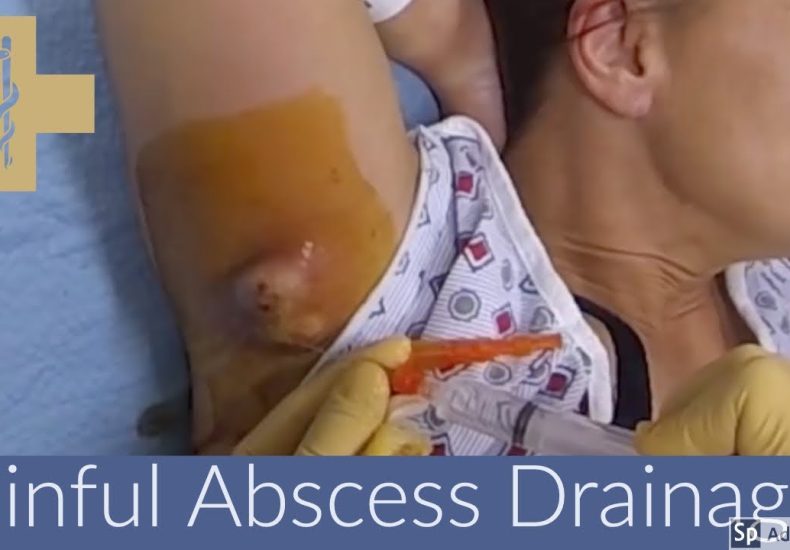
Abscess drainage
Abscess drainage
Please scroll down to watch the video.👇👇
Abscess drainage is a common medical procedure used to remove pus that has collected in a tissue cavity due to infection. It is typically performed by a healthcare provider using sterile technique. Here’s a detailed breakdown of how it’s done:
🧪 What Is an Abscess?
An abscess is a localized collection of pus caused by infection. Pus consists of dead white blood cells, bacteria, and tissue debris. It can form in any part of the body, but is most common in the skin, gums, internal organs, and surgical sites.
🏥 Step-by-Step: How Abscess Drainage Is Done
1. Diagnosis
-
Visual exam for redness, swelling, warmth, and fluctuation (soft pocket).
-
Imaging (ultrasound/CT) may be used for deep abscesses.
2. Preparation
-
Skin is cleaned with antiseptic (e.g., iodine or chlorhexidine).
-
Local anesthesia (lidocaine) is injected to numb the area.
3. Incision
-
A sterile scalpel is used to make a small cut over the abscess.
-
The incision is placed at the point of greatest fluctuation or where the pus is most superficial.
4. Drainage
-
Pus is gently squeezed or allowed to drain naturally.
-
Irrigation with sterile saline may be performed to clean the cavity.
-
A sample of pus may be sent for culture to guide antibiotics.
5. Drain Placement (if needed)
-
A drain (such as a Penrose or rubber drain) may be inserted to keep the wound open and allow continuous drainage.
6. Wound Packing
-
If the abscess cavity is large, it may be packed with sterile gauze to prevent premature closure and help it heal from the inside out.
7. Dressing and Follow-Up
-
A sterile dressing is applied.
-
Daily dressing changes may be required.
-
The wound is monitored for healing and signs of ongoing infection.
💊 Antibiotic Use
-
Not always required for small, uncomplicated skin abscesses after drainage.
-
Indicated if:
-
Abscess is large or deep
-
Patient has diabetes or immunosuppression
-
There is surrounding cellulitis
-
Systemic symptoms (fever, chills) are present
-
Common antibiotics:
-
Cephalexin, Clindamycin, or Trimethoprim/Sulfamethoxazole (Bactrim) for MRSA coverage.
⚠️ Do NOT Drain Abscesses at Home
-
Risk of spreading infection
-
Improper drainage can lead to worsened symptoms, sepsis, or chronic wounds
📚 References
-
Mayo Clinic:
-
Cleveland Clinic: Abscess Drainage Procedure
-
UpToDate: Skin and soft tissue infections, abscess management
Abscess drainage, or incision and drainage (I&D), is a standard medical procedure used to treat localized collections of pus caused by infection. This procedure is commonly performed in clinical settings to alleviate pain, prevent the spread of infection, and promote healing.
🩺 Indications for Abscess Drainage
Abscess drainage is typically indicated when:
-
There is a fluctuant (soft, compressible) area on examination, suggesting a localized collection of pus.
-
The abscess is superficial and accessible.
-
The patient exhibits signs of infection, such as redness, warmth, swelling, and pain at the site.
In cases where the diagnosis is uncertain, ultrasound imaging can aid in distinguishing abscesses from other conditions like cellulitis.
🛠️ Step-by-Step Procedure
-
Preparation:
-
Cleanse the skin overlying and surrounding the abscess with an antiseptic solution (e.g., chlorhexidine or iodine).
-
Drape the area in a sterile fashion to maintain a clean field.
-
-
Anesthesia:
-
Administer local anesthesia (e.g., 1% or 2% lidocaine) to numb the area.
-
Make a linear incision across the area of greatest fluctuance using a scalpel (typically a #11 blade).
-
-
Drainage:
-
Allow purulent material to drain spontaneously.
-
Gently probe the cavity with a hemostat to break up any loculations (pockets of pus).
-
-
Irrigation:
-
Irrigate the abscess cavity with sterile normal saline to remove residual debris.
-
-
Packing (if necessary):
-
For larger abscesses, consider packing the cavity with sterile gauze to prevent premature closure and allow continued drainage.
-
-
Dressing:
-
Apply an absorbent dressing over the incision site.
-
💊 Antibiotic Therapy
Antibiotics may not be necessary for all abscesses. However, they are recommended in cases where:
-
There is surrounding cellulitis.
-
The patient is immunocompromised.
-
There are systemic signs of infection, such as fever.
Empiric antibiotic therapy should cover common pathogens like Staphylococcus aureus, including MRSA if prevalent in the community.
⚠️ Contraindications and Precautions
Certain situations warrant caution or alternative approaches:
-
Deep or large abscesses may require imaging guidance or surgical consultation.
-
Abscesses located near vital structures (e.g., face, hands, genitals) may need specialist evaluation.
-
Presence of a pulsatile mass suggests a vascular anomaly and is a contraindication for I&D.
🩹 Post-Procedure Care
-
Advise the patient on wound care, including regular dressing changes and signs of infection.
-
Schedule a follow-up appointment to assess healing and remove any packing material if used.
📚 References
-
StatPearls: Incision and Drainage
-
UpToDate: Techniques for skin abscess drainage
-
5MinuteConsult: Incision and Drainage of Abscesses
-
WikEM: Incision and Drainage
If you require information on specific types of abscesses (e.g., dental, perianal) or have further questions, feel free to ask.
-
Leave a Reply